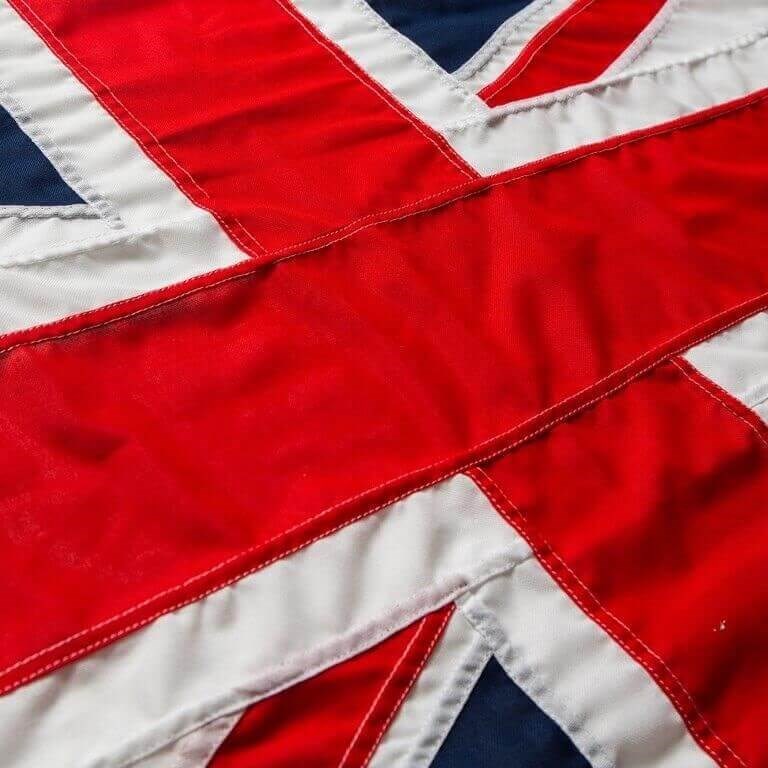Flagpoles
Do I Need Planning Permission Before Installing a Flagpole?
To install a flagpole permanently, you will need planning permission from your local council.
Under the Town and Country Planning Act 1990, flags come with the definition of an ‘advertisement’, and their display is controlled by the Town and Country Planning (Control of Advertisements) Regulations 1992.
However, under Schedule 2 of the regulations, the national flag of any country, including the Union Flag, is exempt from advertisement control provided ‘Each flag is flown from a single vertical pole and neither the flag nor the displays any advertisement additional to the design of the flag’.
Our experience is that in general planning permission is straightforward to obtain, particularly if there are other poles in the area which form a precedent. Our flagpole team can help you with this and provide all the information you will need for your application.
Internal or External halyard?
You can choose from either an external or internal halyards on a flagpole. The internal halyards are vandal proof and also aid with noise reduction. With the rope rigged on the inside of the flagpole, it gives the advantage of added security, durability, and does not interrupt the flowing line.
Do I need a rotating arm?
A rotating arm is used typically for portrait orientation flags. It is a light metal arm at the top of the flagpole which holds the flag out even when there is no wind.
Which Flagpole is the best option for me?
The height of your flagpole should reflect its surroundings and the buildings on which the flagpole is attached or stands in front of.. Here is a guide to suggested flagpole sizes:
- A 6m flagpole height would suit a 1-2 story building.
- An 8m - 10mm flagpole height would suit a 2-3 story building.
- A 12m - 15m flagpole height would suit a tower block, stadium, or prestige site and is ideal on sites with more than one pole.
- A 20m flagpole height would work well with a major development site, visible from a long distance.
Our most popular flagpole height is 8m - suitable in a wide range of locations.
Where Can I Install A flagpole?
If placing in the ground, flagpoles need to have a solid foundation, to ensure it is stable and able to withstand the forces that wind will exert on it. The dimensions of its foundation will depend on its height; as a rule, an 600mm x 600mm x 800mm cube of concrete will suit most poles up to 8m.
If installing flagpole on a building, you can choose either a vertical or an angled bracket. Vertical brackets are mainly used to fit a pole at the top of the building, adding extra height, whilst Angled brackets project a pole into a street, well above head height, making them more visible and prominent and are commonly used on shop fronts. Our angled brackets are 45 degrees as standard.
What size flag will work best?
You need to fly a flag that suits the size of your pole; too big or too small and it will look out of proportion. For standard landscape flags a good guide is that the longest (top) edge of the flags should be a quarter of the height of the pole; for example, a 2m x1m flag would be ideal for an 8m Pole.
Portrait flags don’t tend to follow quite such strict rules, as the width is never more than 1.2m but the depth of the flag can vary and can sometimes be half the length of the pole. On an 8m pole therefore you could fly a flag 4m high. You may also consider a pole with a rotating arm, but be aware that a very large flag will cause extra wind loading on the pole itself and should be used with caution if high winds are expected.
What Type of Flagpole Do I Require?
Permanent flagpoles are suited to any location where it remains in a fixed position such as in front of business premises. Flagpoles may be used for flying either a National flag or business brand flag. Temporary poles are a surprisingly common requirement and can be secured in a variety of ways:
- Placing a flagpole directly into the ground, using guylines to secure.
- Using a heavy base, usually holding water when in place to create weight and make transportation of the flagpole easier.
- Attached the flagpole to a vehicle - with brackets or using a drive on base.
What are flagpoles made from?
Flagpoles were once all made from wood, but now all modern poles are made from either Glassfibre or
Auminium. We supply both, recommending Aluminium for prestigious sites. Both have 25 year lifespan. The
Aluminium pole has superb strength to weight ratio and won’t rust or tarnish. In addition, it can be
anodised or powder-coated in a wide range of colours and can be made up in sections, allowing for easier
delivery.
What type of flagpole is the best?
A standard pole with a halyard and finial is the most common ensemble and the most traditional type. The finial at the top is in the shape of an onion and the halyard (rope) allows the flag to be hoisted. All flag types can fly from this type of flagpole.
Rotating arm
Fitted to the top of the pole, it holds the flag out on permanent display and ensures the message or design is displayed regardless of wind strength. It rotates to follow the wind direction but is only suited to portrait orientation flags.
Base options
Permanent poles generally come with the option of either a ground sleeve or a hinged base. The Ground sleeve is an economic and simple solution, suitable for poles which won’t need to be lowered regularly. The hinged base makes installation and maintenance much easier and enables the pole to be lowered with ease for cleaning.
Can I get my flagpole professionally installed?
Competent builders should be able to do install your flagpole for you. However, we do provide information
about preparing a suitable foundation or effectively installing brackets.
Alternatively, and recommended, our installation team can deliver and install for you. They have
had many years of experience and can overcome a variety of challenges. Most importantly, our team is
experienced in working at height and hold the relevant industry certificates permitting them to install
competently. Most of our poles are supplied with installation added, giving much-needed reassurance to the owner that their pole will remain safe.
How long can I expect my flagpole last?
All our permanent poles come with a 10 year guarantee.
Both Aluminium and Glassfibre poles have a super tough resin-coated finish which is impervious to all that our weather can throw at it. Flagpoles should be lowered and cleaned periodically and the halyard should be checked for signs of wear and replaced if necessary; this alone can often give the whole pole a brand-new look.
What are the rules for flying national flags from flagpoles?
If you intend to fly a National flag from your flagpole you may be keen to follow the correct etiquette.
In Britain, if more than one flag is flown, it is customary for the Union Flag to be flown in the senior position,
either on the tallest pole or on the most prominent pole, to the left of the building and usually the closest to
the entrance to a site or building. If you are flying a company or an advertising flag as well, this should be flown on an adjacent pole and lower than then Union.
If a flag is to be flown at half-mast, there are guidelines here too. Half-mast means the flag is flown two-thirds of the way up the flagpole, with at least the height of the flag between the top of the flag and the top of the flagpole.
Flags cannot be flown at half-mast on poles that are more than 45 degrees from the vertical, but a mourning cravat can be used instead. When a British national flag is at half-mast, other flags on the same stand of poles should also be at half-mast, or should not be flown at all. Flags of foreign nations should not be flown, unless the other country is also observing mourning.
For further information or a more detailed response to any query, please contact us on 01246 472 949 or drop us a line at sales@flagmakers.co.uk.
Flagpole Jargon
Finial - the ‘cap’ at the top of the flagpole, usually a rounded mushroom or onion shape. It can be the same
as the pole or in gold or silver.
Halyard - the rope used to hoist the flag up the pole.
Cleat - the small metal or plastic fitting used to secure the halyard in place once the flag is hoisted, usually
positioned about 1.5m from the ground allowing easy access.
Step Tapered Pole - usually refers to Aluminium poles and made in sections that slot together when installed; a larger diameter of tube is used at the base to give extra strength.
Smooth Tapered Pole - usually refers to Glassfibre and Architectural flagpoles and comes in one piece and is a smooth conical shape, with a larger diameter at the base, gently reducing in diameter up to the top.
What Should I do with my Flagpole in Bad Weather?
In winds exceeding Beaufort Scale 6 (31mph; 27 knots; 14ms) flags should be taken down from your flagpole. This is to ensure that they don’t get damaged and will not add undue stress to the pole.
If the Met Office issues a weather warning for your part of the country, especially relating to strong gusts of
wind, we recommend that you take appropriate preventative action.
Wall Mounted Flagpoles
Do I need planning permission to install a wall mounted flagpole?
If you own the building installing a wall mounted flagpole should not require planning permission, however we would always advice checking with your local council before proceeding. If you are a tenant, you will need the permission of your landlord.
Which wall mounted flagpole is best for me?
Whilst there is no single correct answers for this, here's a quick summary of which wall mounted flagpole might be best for you;
Budget Wall Mounted Flagpoles
Considered to be an entry level flagpole, perfect for flying a flag at home or in a commercial setting with low footfall.
Vantage Aluminium Wall Mounted Flagpoles
Perfect for outdoor use in high footfall areas where creating a great first impression and brand image is of high importance. This flagpole is commonly used by retailers and hotels in city centre locations.
Glass Fibre Wall Mounted Flagpoles
Provides a very similar look and finish to an aluminium flagpole at a slightly lower price point.
What angle brackets are available for wall mounted flagpoles?
We have 2 standard brackets available;
- Vertical brackets are often used to fix flagpoles at the top of a building, where the top of the flagpole exceeds the height of the building.
- 45 degree brackets are the standard alternative option and are often used on retail and hotel fronts.
To get the most out of your wall mounted flagpole, we can also offer bespoke brackets and installation in consultation with our team of flagpole experts.
What size flag should I fly from a wall flagpole?
When it comes to flying a flag on a wall mounted flagpole, there are so many variables to consider, we highly recommend speaking with one of our experts who will be more than happy to advise on the best solution for you.
What style flag should I use on a wall mounted flagpole?
You can fly standard landscape flags on a vertical and 45 degree wall mounted flagpoles, we strongly recommend this if flying a national flag. However, portrait flags are commonly used by organisations flying a co on a 45 degree pole as these flags achieve an excellent finish with the bottom of the flag running parallel to the ground.
Festival Flags
Do I need to produce my own artwork for my festival flag?
The beauty of our festival flags is that they can be cut and designed to the shape and size of your exact specification. If you need help with your design, we will happily take care of your artwork requirements. Alternatively, we are able to offer artwork templates for Music, Angle and Bulge festival flags.
How are my festival flags delivered?
Once your flags have been quality checked, they’re carefully packaged and delivered to your desired address using next day delivery.
What is the difference between feather flags and festival flags?
Festival flags offer the benefits of a sturdy bamboo pole, rotating arm as standard, a wide flexibility of flag shapes, and can be used on soft ground.
Where budget may be an issue, feather flags (so called because of their feather-like structure) offer a more cost-effective alternative.
Do you offer package details for larger requirements?
We certainly do! Our 25,000 square ft state-of-the-art textile facility can easily cater for the largest of orders. We’ve happily supported some of the UK’s leading music and arts festivals, country fairs, other outdoor events and big brands with their promotional requirements. So whether it’s Glastonbury, Leeds, the Isle of Wight, or country fairs like Chatsworth, it’s likely you’ll already have seen some of our creations.
White Ensign
Who can fly a White Ensign?
The white ensign is for the exclusive use of the Royal Navy and any other use at sea is illegal, whilst flying on land would be considered inappropriate.
What does the White Ensign mean?
When flown on a ship, this means that the commanding office of the ship has received the Kings Commission.
What is the difference between a flag and an ensign?
An ensign is a flag that is only flown at sea to indicate the vessel's nationality. The ensign should be flown at the rear of the ship and be the largest flag.





